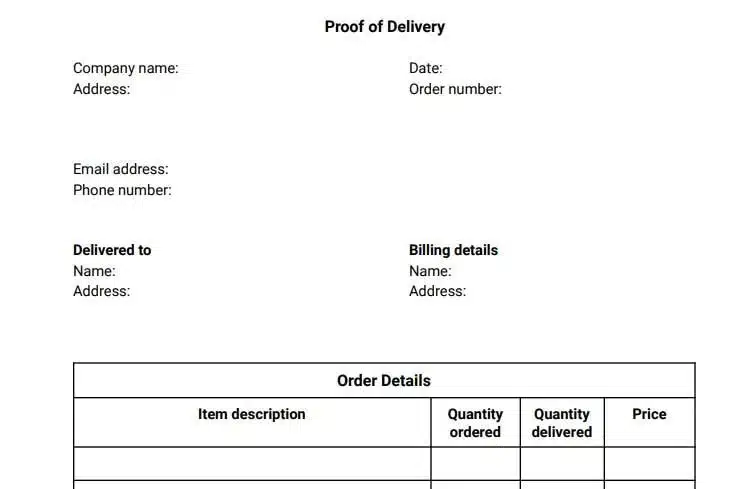Efficient use of container space is crucial in global trade and logistics. Ensuring that international or domestic goods are loaded and stored safely and efficiently can reduce costs and improve transport efficiency. Pallets are a key tool in making goods easy to stack, simplifying the loading and unloading process, and improving transport convenience.
Knowing the standards and load capacities is essential when selecting the right pallets and containers. Correct capacity planning can reduce wasted space and optimize transport costs. So, how many pallets can fit in a container? This article will give you the details.

Container size
The following guide will assist you in identifying the optimal shipping container dimensions and sizes to meet your specific requirements. It will also provide a comprehensive overview of the various types of shipping containers, thereby facilitating the optimization of your cargo needs.
| Interior Dimensions (LxWxH) | Door Opening (WxH) | Volume / Capacity | |
| 20’ Standard | 17’9″ x 7’5″ x 7’5″ | 7’5″ x 7’5″ | 59.3 m3 / 2,093.3 cu |
| 40’ Standard | 37’9″ x 7’5″ x 7’4″ | 7’5″ x 7’4″ | 67.3 m3 / 2,380 cu |
| 40’ High Cubes | 39’5″ x 7’8″ x 8’10” | 7’8″ x 8’10” | 76.3 m3 / 2,694.5 cu |
| 40’ Open Top | 39’5″ x 7’9″ x 7’8″ | 7’9″ x 7’8″ | 66.7 m3 / 2,356 cu |
| 45’ High Cubes | 44’5″ x 7’8″ x 8’10” | 7’8″ x 8’10” | 86 m3 / 3,037 cu |
Container pallet size
Standard pallet/EUR2/ISO2
These pallets weigh around 35 kg and are ideal for heavy industrial loads. Their base frame design makes them easy to move on chain or roller conveyors. When stacked, they can take a safe working load of 1,250 kg and have a maximum additional load of 4,250 kg.
- Standard EUR2/ISO2 pallet dimensions: 1,200 x 1,000 mm (47.24 x 39.37 in)
- Number of standard EUR2/ISO2 pallets that fit in a 20-foot container: 10
- Number of standard EUR2/ISO2 pallets that fit in a 40-foot container: 20-21
EUR/EUR1/ISO1
According to EPAL, the Euro pallet is the world’s most widely used intermodal pallet, with around 450–500 million in circulation. These pallets can be passed through standard exterior doors and have a safe working load of 1,500 kg.
- Pallet dimensions: 800 x 1,200 mm (31.50 x 47.24 inches)
- Number of pallets that can be accommodated in a 20-foot container: 11
- Number of pallets that can be accommodated in a 40-foot container: 23–24
North American standard pallet/GMA
The Grocery Manufacturers Association approves GMA pallets, similar to standard/EUR pallets. They are widely used in North America and are usually used to transport groceries.
- Pallet dimensions: 1,016 x 1,219 mm (40 x 48 inches)
- Number of pallets that can be accommodated in a 20-foot container: 10
- 40-foot container capacity: 20
Below are some other common ISO-approved pallet sizes. These pallets are used in Australia, North America, Asia, and Europe.
Australia
- Pallet size: 1165 x 1165 mm (44.88 x 44.88 inches)
- Number of pallets that fit in a 20-foot container: 10
- Number of pallets that fit in a 40-foot container: 21
How many pallets can fit in a 20-foot container?
20-foot container internal dimensions: length 5.90 m × width 2.35 m
Pallet dimensions (Euro pallet): length 1.2 m × width 0.8 m
Calculation:
- Lengthwise: 5.90 m ÷ 1.2 m ≈ 4 pallets
- Width: 2.35 m ÷ 0.8 m ≈ 2 pallets
- Therefore, a 20-foot container can hold 4 pallets (lengthwise) × 2 pallets (widthwise) = 8 pallets.
How many pallets can fit in a 40-foot container?
- 40-foot container internal dimensions: length 12.03 m × width 2.35 m
- Pallet dimensions (Euro pallet): length 1.2 m × width 0.8 m
Calculation:
- Lengthwise: 12.03 m ÷ 1.2 m ≈ 10 pallets
- Width: 2.35 m ÷ 0.8 m ≈ 2 pallets
- Therefore, a 40-foot container can hold 10 pallets (lengthwise) × 2 pallets (widthwise) = 20 pallets.
How to choose the right pallet
The choice of the right pallet is mainly based on the following factors:
- Cargo size: Ensure that the pallet matches the size of the cargo to avoid wasting space or being unable to load.
- Load-bearing requirements: The pallet must be able to bear the weight of the cargo. Different pallet materials (wood, plastic, metal) suit different load-bearing requirements.
- Container type: The right pallet size is selected to ensure the maximum loading capacity of the container. If a refrigerated container is used, the pallet’s size and material also need to consider the temperature control requirements.
- Transportation requirements: The pallet size is selected according to the mode of transportation of the goods.




